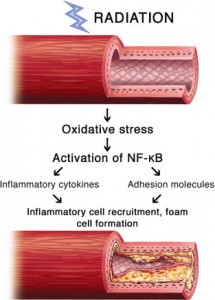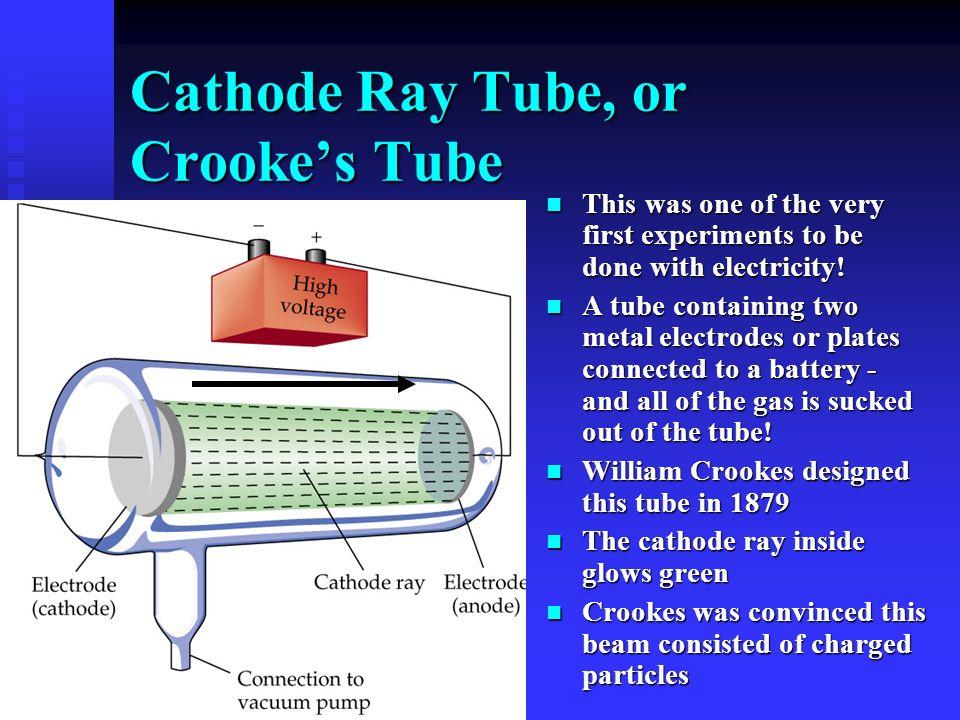

This enabled Thompson to refute the claim by Hertz that electric fields didn't cause deflection (maybe Hertz's glassblower wasn't as good). The critical experiments done by Thompson relied on having an excellent glassblower who was able to construct an apparatus where electrodes inside the discharge tube which could be charged with an electric field (while retaining a very high vacuum). Hertz, though, claimed electric fields would not deflect them (he was wrong). Later, scientists such as Crookes observed that the rays could be deflected by magnetic fields (though he thought they were just negatively charged gas particles). Initially the rays were seen to travel in straight lines. So the idea that some sort of ray was emitted by the cathode in the tube was developed. They were first observed as experiments in gas discharge tubes started to exploit better and better vacuums (the early experiments observed the varying forms of discharge in low pressure gases cathode rays only become significant when there is very little gas left in the tubes).Īt very high vacuums, people observed that the glass at the end of the tubes would glow even though the contents of the tubes did not (as there were too few gas particles left to cause a discharge). The electromagnetic spectrum spans from longest wavelenght to shortest: radio waves, microwaves, infrared, optical, ultraviolet, x-ray, and gamma-rays-all measured in Hz (Electromagnetic waves 2000.Thompson was able to measure the ratio of their mass to their speedĬathode "rays" had been known for some time before Thomson. The gestation of Hertz's scientific discoverries has developed the comforts and pleasures of 21st century life. Albert Einstein would later explain features of the phenomenon and earn the Nobel Prize in physics in 1921 (Photoelectric effect 2012). Additionally, Hertz did not pursure his ancillary discovery of the photoelectric effect in 1887. His former student Philipp Lenard won the 1905 Nobel Prize for Physics when he developed a version of the cathode tube and studied penetration by x-rays based on Herts'z cathode ray experiments in 1892. Hertz's intended and inadvertent discoveries became the launch pad for numerous medical and media technologies. Hertz's images drawn as the paper dipole remain the standard method for describing electrocerebral dipoles and the electrical fields of epileptiform activity recorded on a patient's electroencephalograph. The distribution of frequencies, amplitude, and polarity of electrocerebral potentials as recorded on the computer screen and/or graph paper result from numerous electrical fields of neuronal dipoles. Categorizing electroencephalographic (EEG) patterns by frequency is the primary emphasis of an EEG recording. In recognition of his pivotal discoveries, Hertz's name is the universal synonym for frequency. His touchstone research verified Maxwell's theory and proved that all forms of electromagnetic radiation are propagated as waves at a finite velocity-the speed of light (Heinrich Hertz 2012). He was the first to conclusively prove the existence of electromagnetic waves with precise experimental procedures and instrumentation he engineered to generate and detect waves (radio pulses) across space. Hertz's eclectic talents and research accomplishments ranged from drafting in architecture to meticulous manipulation of standard laboratory equipment often redesigned for his relentless curiosity (Buchwald 1994). Hertz, a brilliant physicist, had the ability to integrate theoretical book knowledge with fundamental bench experimentation.

In 19th century Germany, Heinrich Rudolf Hertz was such a historical person. Their historical foundations support and inspire our today.

Modernity stands on the shoulders of ancestors.


 0 kommentar(er)
0 kommentar(er)
